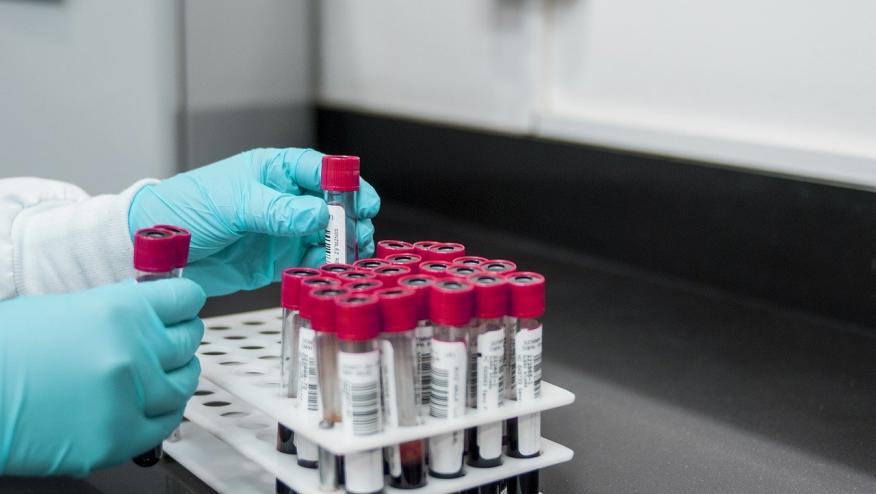Update on Anti-Drug Antibodies and Therapeutic Drug Monitoring Save

We use biologic agents on a daily basis in the treatment of rheumatoid arthritis (RA). Despite having an expanding array of options, our profession is keen on gaining a deeper understanding of why certain drugs fail and being able to predict the most appropriate next steps in treatment.
Biologic agents are manufactured in diverse ways targeting immune mediators such as cytokines and their receptors, which has profound implications for the body’s immune response to the drugs. All monoclonal antibody therapies have the potential to result in the development of anti-drug antibodies (ADA). Typically, fully human drugs, like golimumab, exhibit fewer antibodies at around 2-10%, while humanized and chimeric versions, such as infliximab and rituximab, can range from 0-80%. Unfortunately, there are no formal head-to-head trials comparing these medications. Encouragingly, biosimilars appear to yield similar effects their bio-originator counterparts. Nuances of the data presented here are rooted in variations in ADA detection and titers, differences in assays, and discrepancies in interpretation across experts and disease states.
Leading expert groups have conflicting stances on the management of ADA. The American College of Rheumatology (ACR) briefly mentions ADA in its RA Treatment Guidelines regarding the discontinuation of DMARDs (disease modifying anti rheumatic drugs). In contrast, EULAR (European Alliance of Associations for Rheumatology) recommends measuring ADA in times of clinical nonresponse if on immunogenic drugs and in hypersensitivity reactions, while the United Kingdom’s National Institute for Health and Care Excellence (NICE) recommends more study.
What holds the most significance for clinicians is the clinical impact of developing ADA. This hinges on the ADA detection assay used, the ADA quantity, and whether it can neutralize the drug. Frequently, even in the presence of ADA, the clinical consequences are minimal, particularly in fully human monoclonal antibody drugs. Other potential issues encompass drug reactions, such as injection site and infusion reactions (most common with infliximab), reduced drug efficacy due to neutralization or increased clearance (which can impact drug costs), and rarer occurrences of immune complex induced anaphylaxis and serum sickness.
Numerous factors can impact the pharmacokinetics of biologic medications. Examples include the size and type of biologic agent, Fc binding and clearance, disease type, and genetics. Additionally, factors influencing immunogenicity involve structural differences, glycosylation, and the route, dose, and frequency of administration.
ADA assays depend on drug concentrations in the body and drug sensitivity, specifically the assay’s ability to detect drug in the serum, whether it is free or bound to ADA. Ideally, assays are drug tolerant, measuring ADA bound to biologic agents. However, the choice of ADA assay varies across institutions and labs.
Cross reactions of ADA with other biologic agents are infrequent. ADA are typically detectable within the first two months of treatment and become rare after 12 months. Unfortunately, predicting which patients will develop ADA remains challenging. Nevertheless, if a patient develops ADA with one biologic, it is likely to occur with others.
The literature summarized below delves into group level analyses, finding that ADA are associated with lower drug concentrations and reduced efficacy or secondary loss of response. However, when we consider patients individually, the data exhibits much more variability. Several comprehensive systematic literature reviews have attempted to address the clinical relevance of ADA. However, due to variations in assays, range cut-points, and standardized terms, making comparisons is challenging. In these reviews, ADA have been associated with lower drug concentrations and efficacy, and increased drug side effects. There are strategies to mitigate the effects of ADA, including higher drug doses, loading doses or induction, and the addition of medications such as methotrexate, azathioprine, mycophenolate, and leflunomide.
Studies have yielded mixed results regarding whether ADA monitoring could be predictive of efficacy. A recent study found ADA and body mass index (BMI) predicted the response to biologic DMARDs.
Therapeutic drug monitoring (TDM) shares similar challenges with measuring ADA, including the need for standardized assays and cut points. Generally, the higher the drug levels the better the clinical response. Factors such as duration of therapy, timing, route and dosing interval, immunogenicity, BMI, DMARDS, and disease activity all affect the drug concentrations measured in the assay. Although cost-effectiveness data is promising, there is a lack of studies.
Notably, the ACR RA guidelines do not address TDM, and UK NICE does not advocate for routine checks. EULAR recommends monitoring ADA when conducting TDM, not as a proactive measure, rather in addressing a non-response, consideration of tapering, or to predict future efficacy.
In conclusion, measuring ADA and conducting TDM may provide valuable insight. Standardization of assays and their cut-points is essential to enhance data interpretation and guide clinical decisions. Further research into cost-effectiveness is necessary to inform our strategies.











If you are a health practitioner, you may Login/Register to comment.
Due to the nature of these comment forums, only health practitioners are allowed to comment at this time.